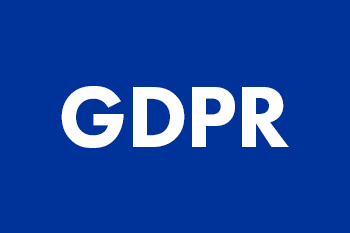Coronavirus by the Numbers: More Than 250 COVID Outbreaks Reported in Illinois Schools – NBC Chicago
More than 250 coronavirus outbreaks have been reported at schools across Illinois, with several involving more than a dozen cases at educational institutions, according to statewide data.
The latest figures from the Illinois Department of Public Health show 257 outbreaks are active at Illinois schools as of Friday, including 31 in Cook County alone.
Ogle, Winnebago, Knox, LaSalle, McLean, Peoria, Mason, Sangamon, St. Clair, Will, DuPage, Kane, McHenry and Cook counties all had increases in school outbreaks over the past seven days, according to the data.
The following Illinois schools are reporting outbreaks of more than 16 cases: East St. Louis Senior High School in St. Clair County, Bunker Hill Schools and Staunton Community USD #6 in Macoupin County, Carlyle School in Clinton County, Okawville Grade School in Washington County and Field School in Cook County.
Though some schools offer case trackers of their own, IDPHreleases data each weekshowing COVID outbreaks from the previous 30 days at schools across the state.
According to the health department, outbreak information is reported once an investigation is considered complete. An outbreak is defined as "those that have been identified by the local health department to have two or more COVID-19 cases who may have a shared exposure on school grounds and are from different households."
Here is a full list of school outbreaks reported by state officials.
DeKalb County 5 outbreaks
Gwendolyn Brooks Elementary School (5-10 cases)
Little John Elementary School (Less than 5 cases)
Sycamore Middle School (Less than 5 cases)
Sycamore Middle School (Less than 5 cases)
Sycamore Middle School (Less than 5 cases)
Ogle County 10 outbreaks
Highland Elementary School (5-10 cases)
Highland Elementary School (Less than 5 cases)
Highland Elementary School (Less than 5 cases)
Mary Morgan Elementary School (Less than 5 cases)
Meridian Junior High School (Less than 5 cases)
Oregon Elementary School (Less than 5 cases)
Reagan Middle School (5-10 cases)
Stillman Valley High School (Less than 5 cases)
Stillman Valley High School (Less than 5 cases)
Stillman Valley High School (5-10 cases)
Winnebago County 2 outbreaks
Durand/Pecatonia Co-Op (5-10 cases)
Hononegah High School (5-10 cases)
Henry County 3 outbreaks
Cambridge Elementary School (5-10 cases)
Central Junior High School (Less than 5 cases)
Geneseo High School (Less than 5 cases)
Knox County 5 outbreaks
Abingdon Avon Middle School (Less than 5 cases)
Galesburg High School (5-10 cases)
Hedding Grade School (5-10 cases)
Knoxville High School (Less than 5 cases)
Steele Elementary School (Less than 5 cases)
LaSalle County 7 outbreaks
LaSalle Peru High School (Less than 5 cases)
Leland CUSD 1 (16+ cases)
Lincoln Junior High School (5-10 cases)
Northlawn Junior High (5-10 cases)
Northville Elementary (5-10 cases)
Seneca Grade School (Less than 5 cases)
St. Michael the Archangel Catholic School (Less than 5 cases)
Livingston County 3 outbreaks
Chatsworth School (5-10 cases)
Prairie Central East (5-10 cases)
Saunemin Grade School (5-10 cases)
McLean County 5 outbreaks
Benjamin Elementary School (Less than 5 cases)
Bloomington Junior High School (Less than 5 cases)
Hudson Elementary School (Less than 5 cases)
Ridgeview Elementary School (Less than 5 cases)
Trinity Lutheran School(Less than 5 cases)
Mercer County 3 outbreaks
Mercer County High School (5-10 cases)
Mercer County High School (5-10 cases)
Mercer County High School (5-10 cases)
Peoria County 2 outbreak
St. Jude Catholic School (Less than 5 cases)
St. Philomena School (Less than 5 cases)
Rock Island 3 outbreaks
Andalusia Elementary School (Less than 5 cases)
Bicentennial Elementary School (Less than 5 cases)
Rock Island High School (Less than 5 cases)
Greene County 1 outbreak
North Greene Elementary School (5-10 cases)
Logan County 1 outbreak
Northwest Elementary School (Less than 5 cases)
Macoupin County 7 outbreaks
Ben-Gil Elementary School (Less than 5 cases)
Bunker Hill Schools (16+ cases)
Carlinville High School CUSD #1 (Less than 5 cases)
Gillespie CUSD #7 (Less than 5 cases)
Mount Olive School (Less than 5 cases)
North Macoupin Schools (11-16 cases)
Staunton Community USD #6 (16+ cases)
Mason County 2 outbreaks
Havana High School (Less than 5 cases)
Midwest Central CUSD #191 (11-16 cases)
Sangamon County 18 outbreaks
Auburn School Pre-K (Less than 5 cases)
Ball Charter School (5-10 cases)
Chatham High School (Less than 5 cases)
Iles School (Less than 5 cases)
Jefferson Middle School (Less than 5 cases)
Lamphier High School (Less than 5 cases)
Pleasant Plains Middle School (Less than 5 cases)
Pleasant Plains Middle School (5-10 cases)
Pleasant Plains Middle School (5-10 cases)
Pleasant Plains Middle School (Less than 5 cases)
Pleasant Plains Middle School (Less than 5 cases)
Scott County 1 outbreak
Winchester Grade School (5-10 cases)
Clinton County 1 outbreak
Carlyle School (16+ cases)
Madison County 9 outbreaks
Alton Middle School (Less than 5 cases)
Central Elementary (Less than 5 cases)
See the article here:
Coronavirus by the Numbers: More Than 250 COVID Outbreaks Reported in Illinois Schools - NBC Chicago
